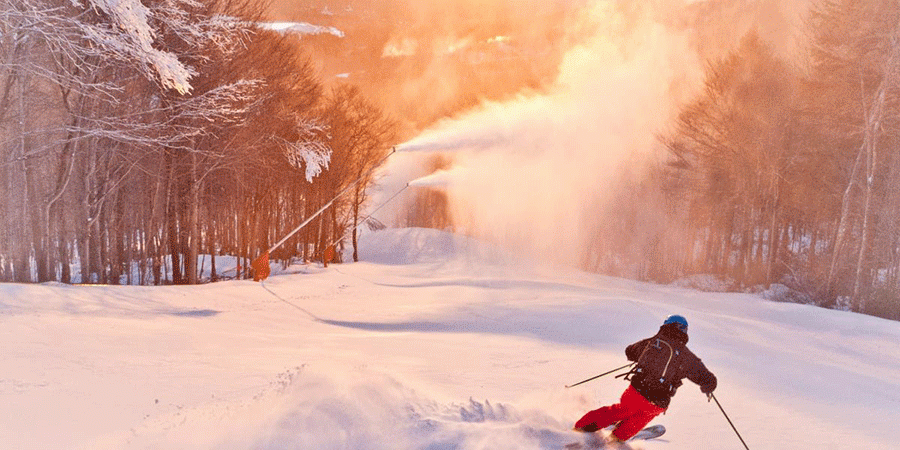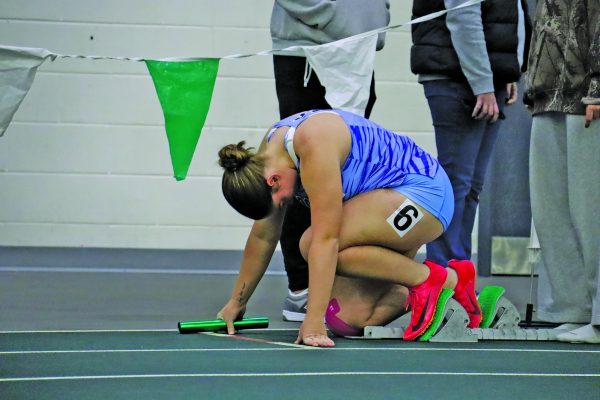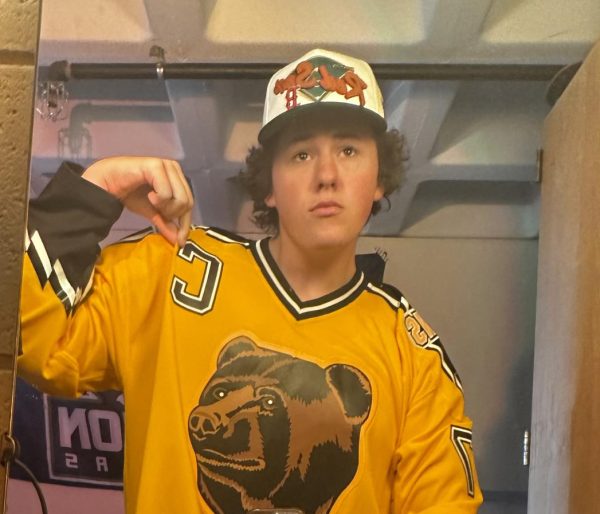Winter resorts pin hopes on snowmaking advances
As winter resorts across Vermont look towards sustainability and future investments, snowmaking continues to be a top priority for some of the state’s larger resorts like Jay Peak, Okemo, Stowe, Killington, Smugglers Notch and Sugarbush.
Snowmaking is the combination of water and air, where they are both pressed through the nozzle of snow-guns. Snowmaking will usually occur at resorts whenever temperatures allow for it. It begins most frequently in late October and November and ending sometime in late February or March.
Resorts will push to open as soon as possible by focusing heavily on certain terrain, as well as laying down enough artificial snow for base depth purposes to offer as many trails into late spring as possible.
Ski Vermont Communications Manager Chloe Elliott says that snowmaking is hugely important to resorts. “Vermont resorts have some of the world’s best snowmaking capabilities. Thanks to snowmakers, we are able to cover over 80 percent of the state’s ski terrain, regardless of natural snowfall,” says Elliott.
With this, she notes that snowmaking efforts increase every year at Vermont’s resorts. This is done by continuing to improve and upgrade snowmaking technology and efficiency.
Director of Public Relations for Okemo Bonnie MacPherson says that they wouldn’t be in business without snowmaking. With this, she says that “good and bad winters aren’t something that has come about with climate change.”
At Stowe, Marketing and Communications Director Jeff Wise says that they wouldn’t be able to open a top-to-bottom run for opening day in November each year without snowmaking. “Regardless of how much natural snow we get in the early season, snowmaking is continuous until we reach base depths that will ensure good spring skiing coverage into mid-late April,” says Wise. “Snowmaking is also critical to building our six different sized terrain parks that vary in terrain for all abilities including experts.”
MacPherson continues by noting that they have always faced natural snowfall challenges. “Since our owners, the Mueller’s purchased Okemo in 1982, one of the first things that they did to make us survive the times was installing a bunch of snowmaking,” said MacPherson. “It’s been a huge commitment from the start, realizing that it was something that they had to do to keep the resort competitive.”
Jay Peak Resort Mountain Operations worker Corey Guillette says that the overall importance of snowmaking is to cover up obstacles on the ground that may be hazardous, like cliffs, water bars and water openings on the trails. “On the lower mountain, we make a base layer of artificial snow to flatten out so that we can have a nice surface for beginners to learn and practice on,” says Guillette. “When dealing with snowmaking on the upper mountain, we make a good depth of snow for a good surface to groom each night for people to ski on each day.”
With this, Guillette notes that leveling out and profiling trails is another aim that comes with snowmaking on certain terrain. “When you have a double fall line, it is easier to make trails straighter to best manage the snow we make with groomers,” said Guillette.
Like MacPherson, Guilette says that new technologies and strategies are going to continue to be vital for resorts future successes. “With new snowmaking technology, we know when to fire the guns up and when to shut them down very precisely to save energy,” said Guillette. “Additionally, we know what guns work best at certain locations around the mountain given different terrain exposures.”
HKD Snowmaking Technologies has been spearheading efficiency in recent years. Guillette says that they use their newer HKD impulse guns to save energy: “These guns have set stages where we can select different gallons-per-minute (GPM) consumption rates that can cut down the air flow of the gun, minimizing operating costs.”
When gathering water for snowmaking purposes, Guillette notes that snowmaking crews use their designated snowmaking pond as a reservoir to gather brook water. “When drawing water from the reservoir, we can safely drain it all the way down to the bottom where we see the pipe sucking water,” said Guillette.
As far as the planning for snowmaking goes, Wise says that meetings with mountain department managers occur daily to discuss where and when they will be making snow, as well as to coordinate grooming efforts. “These decisions are based on our daily skiing, lift operations, special events, anticipated crowd sizes and forecasted upcoming business levels,” says Wise. “We also have a private weather service that provides forecasting for every 24 hour time period in three-hour increments, including wind speed and direction, temperature and humidity.”
When looking at smaller resorts, MacPherson notes that snowmaking is one of the challenges that is going to need to be addressed in the future to keep business sustainable.
Prior to being done with snowmaking at Jay this year, Guillette said he was already in the process of planning for next winter’s operations. “We are focusing on things that we could do better,” said Guillette. “We also always plan to set everything up when it’s warm out so we can easily hook everything up.”
Guillette says that their snowmaking team will usually talk the week before firing everything up for the first time. “We look at our 10-day outlook and see what the weather is going to be so we can plan on people coming in,” says Guillette. “Someone will come in before the temperature is predicted to be cold enough and makes sure everything is going to work out by doing a temperature run from the top of the mountain.”
Wise noted that in 2005 a major snowmaking upgrade was implemented at Stowe. “The key component of the new snowmaking operation was a 110-million-gallon water storage area we named Peregrine Lake,” said Wise. “The lake is used to both store water to increase our snowmaking capacity, while controlling the median flow of water back into the streams and river.”
According to Wise, the lake has revitalized and protected the aquatic community near the resort by preventing both excess water usage and draught altogether when it comes to Stowe’s snowmaking operations. “Our stream restoration projects helped earn Stowe Mountain Resort the status as an Audubon International Sustainable Community,” said Wise.
In his 19 years of mountain operations work at Jay, Guillette says that everything is a give or take scenario when it comes to Mother Nature giving them the temperatures they want.
To get a better perspective of the importance and overall focus on snowmaking in Vermont, Okemo’s snowmaking team has recently been named one of the finalists for HKD snowmaking’s “I Am a Snowmaker Award.” This award is presented in recognition of outstanding snowmaking teams from across North America.
At Stowe, their operations were expanded over a three-year $10 million expansion that was completed for the 2015-2016 season. This purchase consisted of a vast number of different snow-guns and roughly 20 miles of snowmaking pipeline being laid, as well as a new 3,000 GPM booster pump house on Mount Mansfield.
Killington Resort is known for being home to one of the longest east coast seasons. With this, they are home to the most extensive and high-powered snowmaking system in New England. They will lay a large amount of artificial snow down very early on in the season with hopes of dragging the season out to Memorial Day weekend every season.
At Sugarbush, they make snow on 70 percent of their terrain. They completed a five-year, $5 million snowmaking upgrade in 2014. With this purchase consisting of low-energy snow guns, Sugarbush has seen energy savings pushing 15 percent at the same time as being able to make more snow in less time.
Smugglers’ Notch also made a large investment in snowmaking that started in 2012 and ended in 2015. Improvements there, according to resort officials, have totaled $5 million. Terrain coverage has improved significantly. Last year, Smuggs carried out a plan to stretch a pipeline to the Lamoille River, where they have a seemingly unlimited amount of water for snowmaking purposes. This was a part of the resort’s plan to increase snowmaking coverage to 80 percent in the near future.
Resorts live and possibly die by weather during snowmaking season, and with prediction models proposing only rain precipitation in roughly 30 to 40 years, resorts and snowmaking companies are going to need to work out every possible option they can to get as much out of artificial snow technologies as possible.







